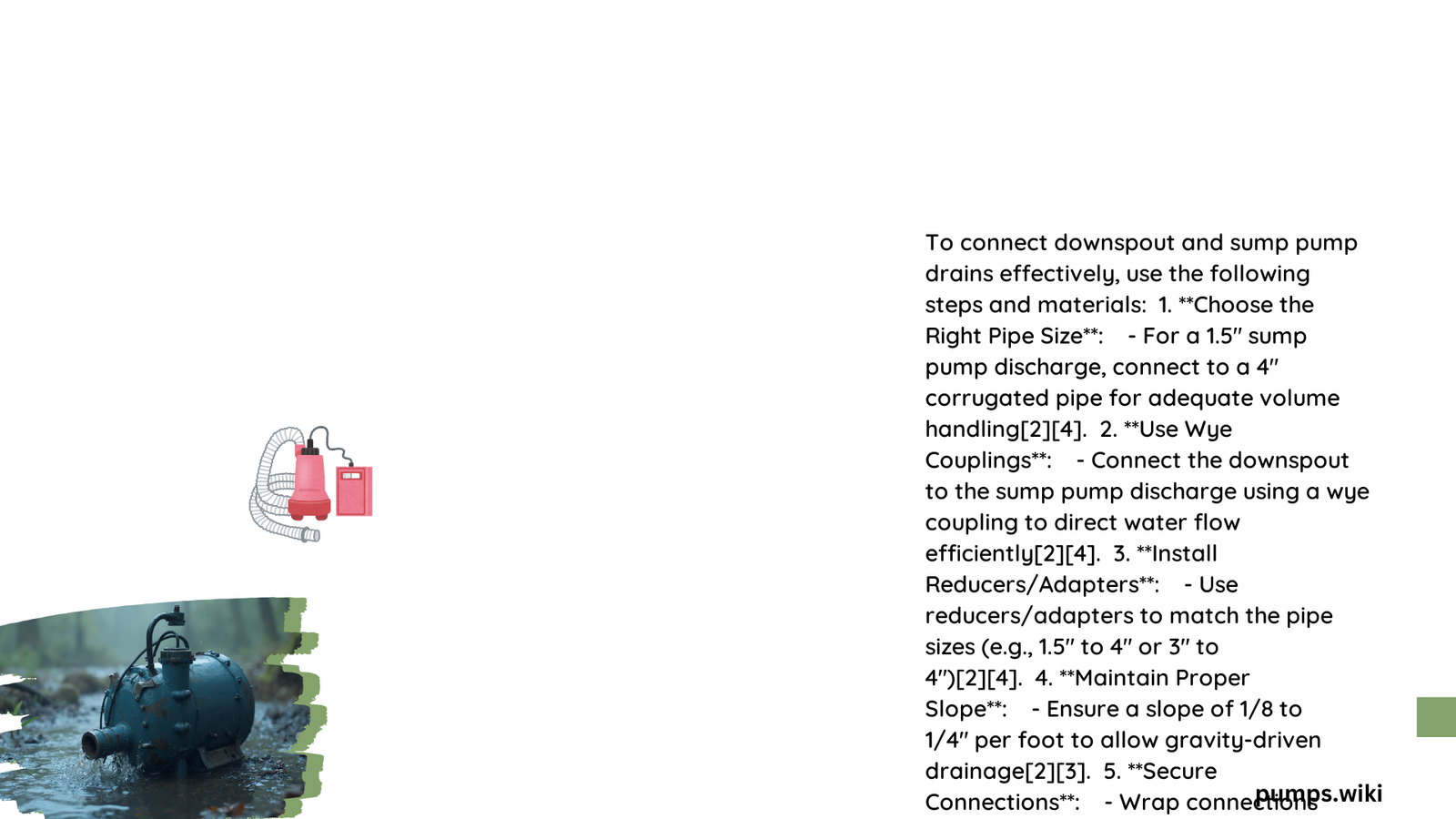Downspout and sump pump drain connectors are critical components in managing water flow around residential and commercial structures. These specialized connectors ensure efficient water redirection from rooftops to drainage systems, preventing foundation damage, soil erosion, and potential water-related structural issues. Proper installation and selection of these connectors can significantly enhance a property’s water management infrastructure.
What Are Downspout and Sump Pump Drain Connectors?
Downspout and sump pump drain connectors are specialized hardware designed to create seamless connections between gutter downspouts and underground drainage systems. These connectors facilitate the smooth transfer of rainwater from roof surfaces to designated drainage points, preventing water accumulation near building foundations.
Key Components of Effective Drainage Connections
| Component | Material | Function | Durability Rating |
|---|---|---|---|
| PVC Adapters | Polyvinyl Chloride | Direct Water Flow | High |
| Flexible Connectors | Rubber/Synthetic | Accommodate Movement | Medium |
| Rigid Connectors | Metal/Hard Plastic | Secure Attachment | High |
How Do You Select the Right Downspout Connector?

Selecting the appropriate downspout and sump pump drain connector involves considering several critical factors:
- Dimensional Compatibility
- Measure downspout and drain pipe dimensions precisely
- Typical sizes range from 2×3 to 3×4 inches
-
Ensure exact match to prevent leakage
-
Material Considerations
- PVC: Corrosion-resistant, long-lasting
- Rubber: Flexible, easy installation
-
Metal: Strong, durable for heavy-duty applications
-
Flow Rate Requirements
- Evaluate water volume from downspouts
- Choose connectors supporting adequate drainage capacity
- Consider local rainfall intensity
What Installation Techniques Ensure Optimal Performance?
Preparation Steps
- Clean all connection surfaces thoroughly
- Remove burrs and rough edges
- Apply waterproof sealant around connection points
Connection Methods
- Use pop rivets for secure attachment
- Apply silicone sealant for watertight seal
- Ensure minimum 1/4 inch slope for proper drainage
What Challenges Can Arise with Drain Connectors?
Common challenges include:
– Debris accumulation
– Improper slope
– Material degradation
– Inadequate sealing
Prevention Strategies
- Install mesh screens
- Regular maintenance
- Use high-quality connectors
- Professional periodic inspection
Cost and Performance Considerations
Connector Investment Range:
– Basic models: $10 – $25
– Professional-grade: $30 – $75
– Complex systems: $100+
Performance Metrics:
– ASTM standard compliance
– Water flow capacity
– Durability under environmental stress
Expert Installation Recommendations
- Measure twice, cut once
- Use appropriate safety equipment
- Follow manufacturer guidelines
- Consider professional installation for complex systems
Maintenance Best Practices
- Inspect connectors annually
- Clean debris from downspouts
- Check for signs of wear or damage
- Replace worn components promptly
Technical Specifications to Verify
- ASTM D-3034 compliance
- UV resistance
- Temperature tolerance
- Chemical resistance
Final Recommendations
Invest in high-quality downspout and sump pump drain connectors. Prioritize proper installation, regular maintenance, and professional assessment to ensure long-term water management effectiveness.
Conclusion
Effective water management begins with understanding and implementing robust downspout and sump pump drain connectors. By selecting appropriate components and following expert installation techniques, homeowners can protect their property from water-related damage.
